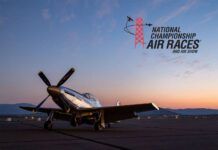Pilatus, the Swiss company best known for their versatile PC-12 turboprop, announced in May they are working on their first jet aircraft. The PC-24 is powered by two Williams turbine engines and will be able to use short and even unpaved runways. The cabin can be fitted with six to ten seats. A big cargo door will be standard. The company has designed its own “Advanced Cockpit Environment” system, which aims to reduce workloads for a single pilot. The jet project began last summer and work on the prototype “is in full swing” in Switzerland, the company said. First flight is expected by the end of 2014, with deliveries to start in 2017, at a price of about $9 million. The company said the program is fully funded from its own resources.
Virgin Galactic, the Richard Branson-owned company working with designs created by Burt Rutan and Scaled Composites, said recently test flights into space will start by the end of this year, with passenger flights to start soon after. The carrier vehicle, WhiteKnightTwo, flies to about 50,000 feet, where the passenger capsule, rocket-powered SpaceShipTwo, is released and climbs above 100,000 feet. After a brief period when passengers can experience weightlessness and view the black sky of space, the ship will glide back to earth at the company’s spaceport in New Mexico. The dual-ship design is based on Rutan’s much smaller, but similar, aircraft that won the X Prize.
The effort grinds on to find an alternative fuel for general aviation that won’t spew lead into the atmosphere, and two recent announcements promised some progress. Cessna’s first production Turbo Skylane JT-A, powered by a Jet-A diesel engine, flew late in May. The Safran-made 227-hp SMA engine is expected to use up to 40 percent less fuel than a comparable avgas engine, according to Cessna, burning 11 gallons per hour at 156 knots. Certification and first deliveries are expected soon. Meanwhile, Airworthy AutoGas, based in Arizona, said it plans to produce and distribute a 93-octane premium unleaded, ethanol-free fuel as an option for aircraft that can burn mogas. The company says its fuel will be available late this year.
Honda Aircraft Co. said in May it will extend its certification effort for the HondaJet light jet into next year, to allow time for more testing of the aircraft’s GE Honda Aero engines. Last October the company said it was aiming for full FAA certification by this summer, with deliveries to start before year-end. Honda Aircraft now says it expects the engine to be certified by the end of this year. The company has not yet set a new delivery schedule, but promised to release more details later in the year.
The NTSB last year cited a need for transition training to help new owners of homebuilt aircraft to fly safely, and to support that effort, Sonex has developed a training program for its fleet. Sean Elliott, vice president of advocacy and safety for EAA, said he hopes the transition training program and others like it will become models for the industry. “EAA is very excited that Sonex took the initiative to create its own highly tailored training program,” Elliot said. “This is a significant enhancement to safety for the kit manufacturer community.” Sonex said the FAA has authorized the company to provide flight training for pilots who are building, buying, or considering a Sonex design.
Solar Impulse set a new distance record for its solar-powered electric aircraft when it flew nonstop from Phoenix to Dallas, one leg on a coast-to-coast flight…A survey showed that impending changes that make it harder to get a right-seat airline job are affecting students’ career choices…In a test flight in the U.K., a Jetstream 31 flew in the civil airspace under control of a remote ground-based operator, with the takeoff and landing handled by the onboard crew…The 787 fleet has returned to passenger operations, while the NTSB continues searching for a cause to the battery meltdown that caused the grounding…See www.avweb.com for breaking news in general aviation.




